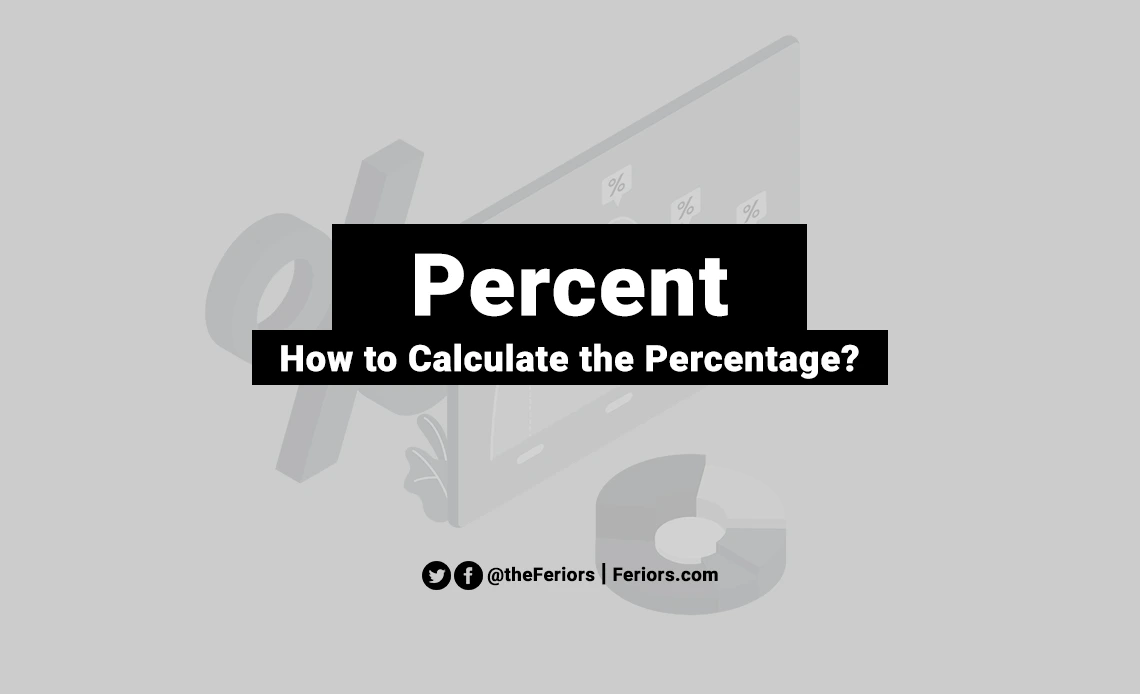What is Percent
Percent is mean per hundred or out of 100. The percentage is a ratio that compares a quantity to 100. The percentage is often denoted by the symbol “%” called “percent” or “percentage”. For example, 60% is mean 60 per hundred, or every 100 have 60.
If we talk about 60% of 3,000 students in the university are women. That means 60 out of every 100 students are women, while 3,000 are 30 groups of 100 people.
Then, 60% of 3,000 students is 1,800 (60 students in 30 group or 60 x 30).
Table of Contents
- How to Calculate Percent to Number
- How to Calculate Percent from Number
- How to Calculate Percentage Change
- How to Calculate Percent Increase
- How to Calculate Percent Decrease
- How to Calculate Percent Difference
How to Calculate Percent to Number
The percent can be calculated by multiplying the percent number with the base number, then dividing by 100. As the following formula:
Percent = (Percent Number x Base Number) ÷ 100
For example, 60% of 3,000 can be calculated by (60 x 3,000) ÷ 100 = 1,800

How to Calculate Percent from Number
To determine how many percent, it can be calculated by dividing the portion number by the base number, then multiplying with 100 to convert the decimal to a percent. As the following formula:
Percent% = (Portion Number ÷ Base Number) x 100
For instance, what percent of 3,000 is 1,800? can be calculated by (1,800 ÷ 3,000) x 100 = 60%
How to Calculate Percentage Change
The calculation of the percentage change is a situation when the number is changed in value and you need to figure out how many percent it changed. There are two situations of the calculation of percent change, include:
- How to calculate percent increase
- How to calculate percent decrease
How to Calculate Percent Increase (Growth)
Percent increase refers to the percent that changes in the value when it is increased. For example, salary increase. So, this is the same method of how to calculate percentage increase in salary.
Percentage increase can be calculated by the following formula:
Percentage increase = [(Increased Value – Original Value) ÷ Original Value] x 100
For example, the current salary is $10,000 a month if the salary is increased to $12,000, it is increased by = [(12,000 – 10,000) ÷ 10,000] x 100 = 20%.
This means the salary increased by 20%.
How to Calculate Percent Decrease
Percent decrease refers to the percent that changes when the value is decreased. For example, salary decrease. The percentage decrease can be calculated by the following formula:
Percentage decrease = [(Original Value – Decreased Value) ÷ Original Value] x 100
For example, the current salary is $20,000 a month if the salary is decreased to $15,000, it is decreased by = [(20,000 – 15,000) ÷ 20,000] x 100 = 25%.
This means the salary is decreased by 25%.
How to Calculate Percent Difference
The percentage difference is the calculation that determines how many percent of the difference between two values. However, it is use the same calculation method as the percentage change.
Percentage difference can be calculated by the following formula:
Percentage difference = [(New Value – Original Value) ÷ Original Value] x 100
For example, you buy gold for $1,000 and then you sell it for $1,200. What is the percent of your profit?
Profit% = [(1,200 – 1,000) ÷ 1,000] x 100 = 20% profit.
Note: To convert a percent to a decimal, you can divide the percentage number by 100. For example, to convert 64% to a decimal: 64 ÷ 100 = 0.64
In contrast, to convert a decimal to a percent, you can multiply the decimal by 100, or just move the decimal point two spaces to the right, then include the % at the end. For example, to convert 0.64 to a percentage number: 0.64 x 100 = 64




